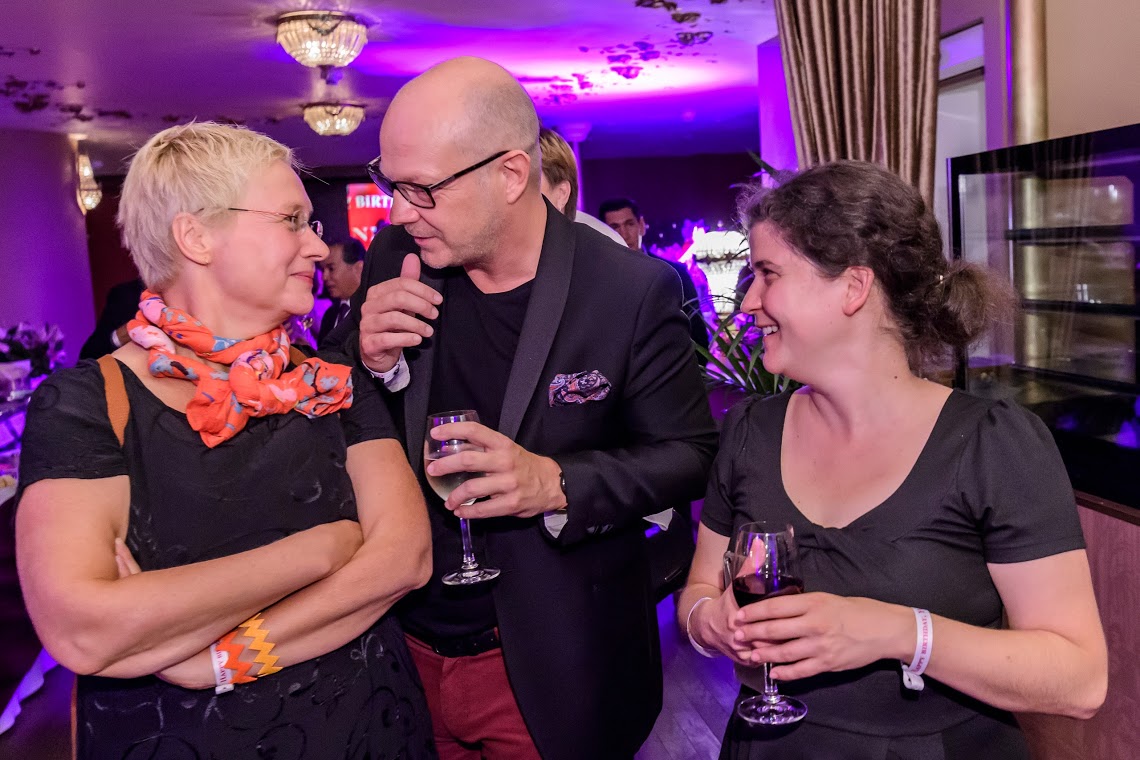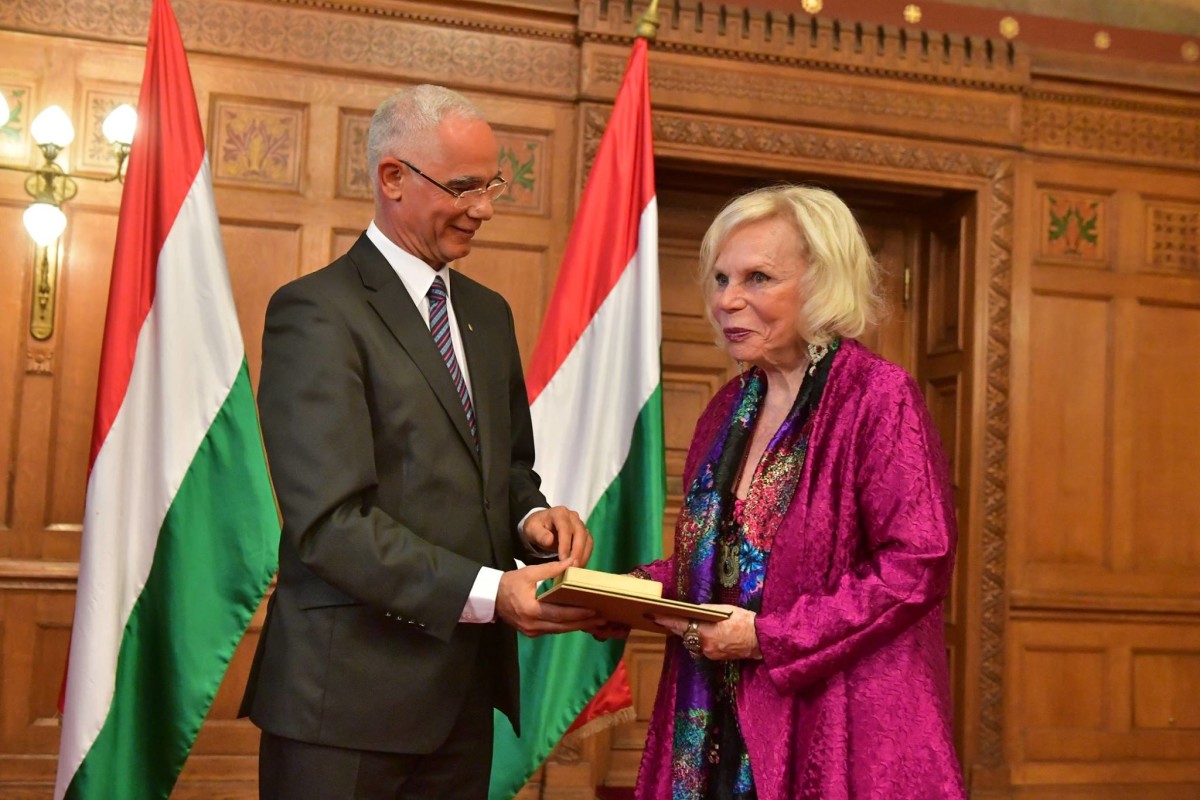Kevin Clarke
Operetta Research Center
23 September, 2017
We recently reported on the new Emmerich Kálmán Research Centre that will open in Budapest. It’s an academic institution funded by the Hungarian government to preserve and promote Hungarian cultural heritage. But what does that mean, exactly? What will the Research Centre do under the guidance of Professor Magdolna Jákfalvi? What’s the collaboration with the Budapest Operetta Theater going to look like? Here is the text from the official “project proposal” outlining the work ahead.

Magdolna Jákfalvi (l.) together with the director of the Budapest Operetta Theater, György Lőrinczy, at Yvonne Kálmán’s 80th birthday party. (Photo: Budapesti Operettszínház)
The goal of the Research Centre is to reveal the cultural memories connected to the history of Hungarian Musical Theatre, to collect the oeuvres connected to it, to exhibit and promote them in a diverse and interdisciplinary manner.
The most famed composers of Hungarian musical theatre – Kálmán, Lehár, Huszka, Ábrahám, Eisemann – began their work in Budapest, and some retained it as their centre of operation even after reaching global success. The goal of the proposed research centre is to serve as a national archive and an international research hub, opening the oeuvre of Hungarian musical theatre composers up to international research, while tying it to Hungary in the international cultural consciousness. These tunes contributed to the 20th century European identity, they form a part of the Hungarian national heritage, their composers’ oeuvres deserve a shared collection, a national archive that facilitates academic interpretations and easy access.
The Research Centre is founded on the revelation that heritage emerging on the borderlines of different academic disciplines often remains unclaimed, and thus works that build on the traditions of classical music and prose theatre, but which follow their own cultural practices to create vastly different results, might find themselves locked out of national cultural remembrance. The centre’s proposed field of research will, alongside processing the heritage of world-famous composers, librettists, singers and musicians, include all works created within the genre of musical theatre.
The proposed research projects start from the perspective of theatrical performances, to reveal the unique features of Hungarian musical theatre, but they also process works that were created outside of theatrical institutions, on variety stages, in jazz clubs, in community centres and in the public spaces of popular music, and – partly because of this – do not appear within any academic discipline’s field of research.

Yvonne Kalman receiving the Pro Cultura Hungarica prize from Hungary’s culture minister in the House of Parliament. (Photo: Budapesti Operettszínház)
In the Research Centre theatre scholars, museologists, musicologists and sociologists would work together, within the structure of Hungarian academic life but with an interdisciplinary methodology, so their task would point beyond mere archiving, and their results would earn international visibility. Based on the collection of personal and official documents, the comparison of private bequests and state archives, the researchers at the Centre would interpret national theatre as well as the forums of Budapest popular culture, the works created within the secondary, semi-legal publicity, the histories of small-town theatres, the traditions of musical theatre in Transylvanian and Slovakian Hungarian communities.
Thus, the functioning of the Emmerich Kálmán Research Centre can be planned as follows:
- An academic centre that uses conferences, workshops and publications to define the place and impact of Hungarian musical theatre in international cultural studies. It attracts the attention of international academia to Hungary with cooperative projects.
- It functions as a public library, sheet music collection and museum, one that uses up-to-date museum pedagogy, and provides personal and communal experiences to ensure that a wide range of possible viewers are interested.
- An online archive and site, that provides a database with analytical articles to make the primary and secondary documents of Hungarian musical theatre available in multiple languages.
- An ‘agency’ of cultural exchange that promotes the works of the legendary creators of Hungarian musical theatre, in order to facilitate the creation of new performances.
The Research Centre functions as part of the PIM-OSZMI organisation, but as its own independent unit – with the long-standing cooperation of the Budapest Operetta Theatre. The work of the Research Centre would allow lost or unknown bequests to be processed within a few years, allowing Budapest to be the primary site of research on the topic, instead of American university libraries. Both in the international academic life and in our own awareness, we can reattach the discussion of musical theatre to Hungarian culture, as it was a hundred years ago. After all, this is one of our national strengths.
